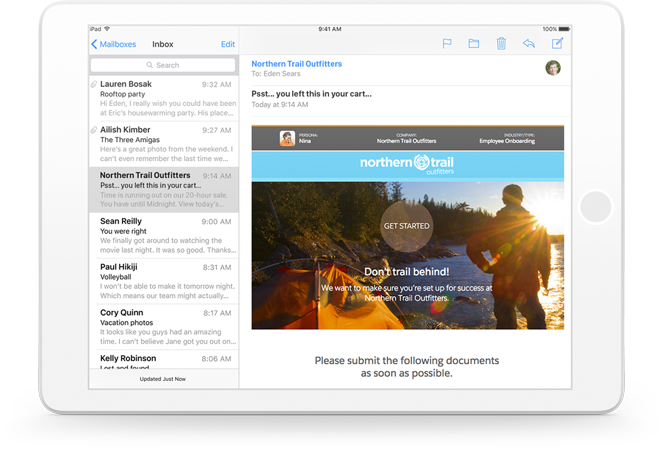How to Re-engage Your Email Subscribers
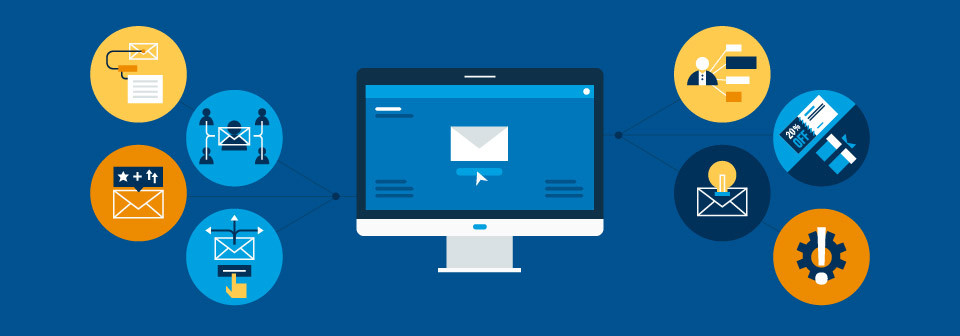
For a while, many marketers feared that email marketing was dying a slow death — the way of direct post mail, which has declined since the invention of email. Social media has changed the way we use email, too. But email marketing is still incredibly useful and helps you reach email subscribers who want to purchase products or services from your organisation.
Luckily, some of the biggest issues facing email marketing are the most common. This means there are many solutions to the hurdles, including decreasing bounce rate and unsubscribes, that many companies face. Below are some actionable statistics and options for making sure your email subscribers are engaged and that they look forward to reading your messages.
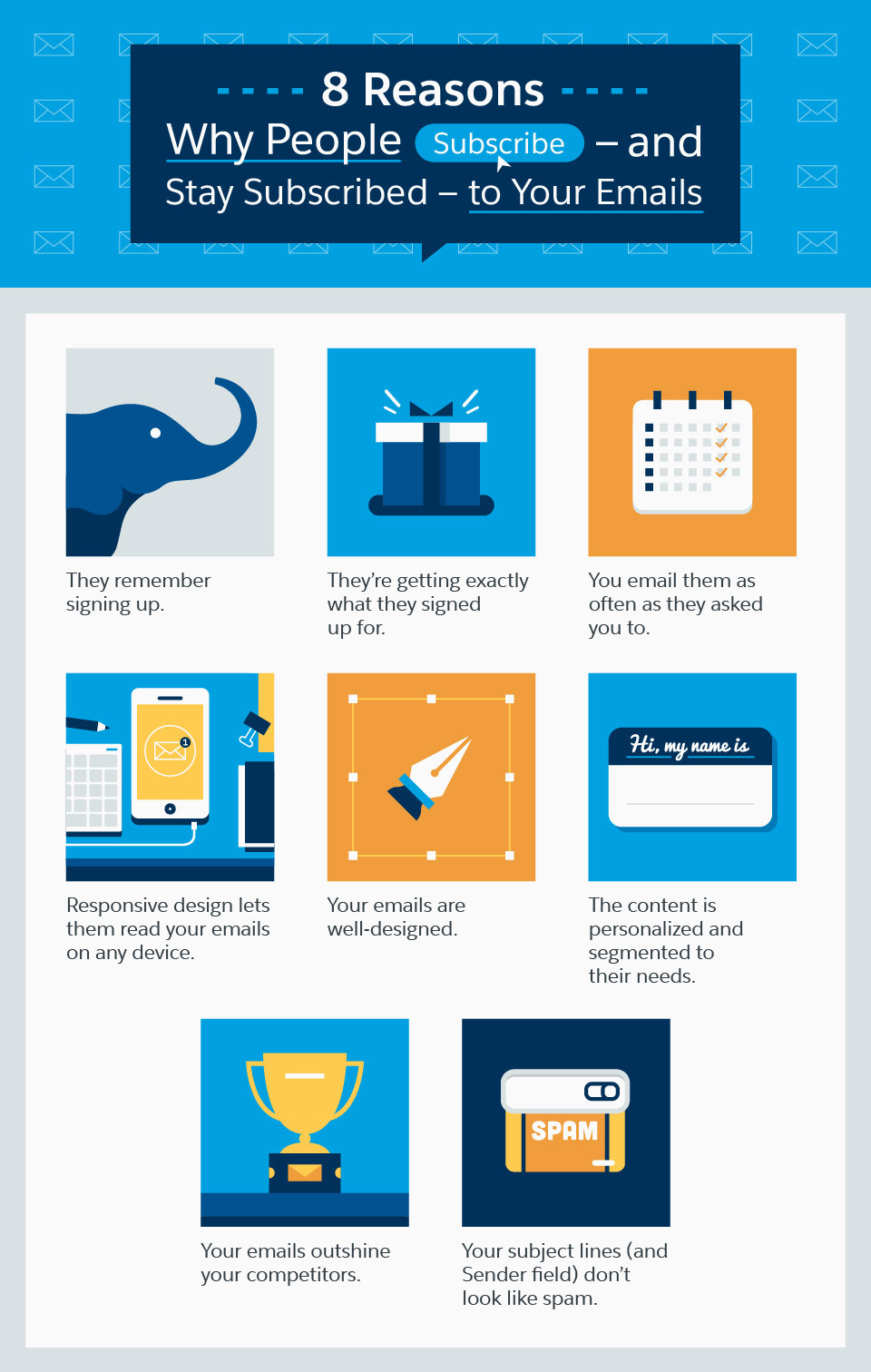
Build, Don’t Buy
One of the biggest mistakes both new and veteran email marketers make is buying email lists of subscribers. Since there is such a variety available for purchase, all of which promise specific industries or interests, it’s hard to turn them down. However, there are several reasons buying a database of customers is a bad idea, including recipients reporting your emails as spam, low conversion rates for campaigns, and a “cold” contact to subscribers. Customers prefer to buy and interact with companies they know. When they get a cold email from an organisation they’ve never heard of, it can make a bad impression.
This is why it’s ideal to build your email subscriber base organically instead of buying it. Some of the easiest ways to build your list include:
- Popup box: Use a free tool like SumoMe or other plug-in (if your site runs on WordPress) to have a popup box appear when new visitors first visit your site. Surprisingly, even though popups temporarily impede user experience, many users subscribe to receive emails from popups.
- Header or footer bar: You can add a “floating” bar at the top or bottom of your page (like Hello Bar) that isn’t as intrusive as a popup, but is an eye-catching color to get users’ attention.
- Landing or sales page: Using a strong call to action, such as a free webinar or white paper, can be a great pull to gain more email subscribers. Just make it clear that email subscription is what’s in exchange for the free content.
Use more than one of the above techniques (or even more not mentioned here) concurrently to give users the opportunity to subscribe to your emails, no matter where they entered your site.
Reduce High Bounce Rates
Another common problem many email marketers struggle with is a high bounce rate, which is when an email is unable to be delivered to the customer. Your hard bounce rate, or the number of emails that are permanently undeliverable, should be close to 0% of your total subscribers.
According to Comm100, one of the most effective ways to reduce your bounce rate percentage is to regularly remove inactive email addresses and users who request to no longer receive any email correspondence from you. Your email subscription provider has a report that shows these email addresses. Set a monthly reminder to delete these from your list.
How to Reduce Spam Complaints
Receiving a report by a subscriber that your email is spam is hard to not take personally. However, if you are receiving these notifications on a regular basis, it’s time to rework your strategy to reduce spam complaints.
There are a few reasons why email subscribers may report something as spam:
- They receive emails from your organisation too often. If your click-through rate is also decreasing, consider cutting down on the number of emails you send. A daily email may overload your audience. Consider dropping down to one to three times per week or fewer.
- Your emails don’t have a clear purpose. The best converting emails have a strong call to action that provides the customer with a clear reason to go to your website. Simply emailing them about your company or what you offer without providing something enticing can be frustrating for someone who already feels overwhelmed with email.
- It’s difficult to escape. Make sure your unsubscribe process is simple and easy. According to Return Path, if your subscriber finds it difficult to unsubscribe, they are more likely to send a spam report.
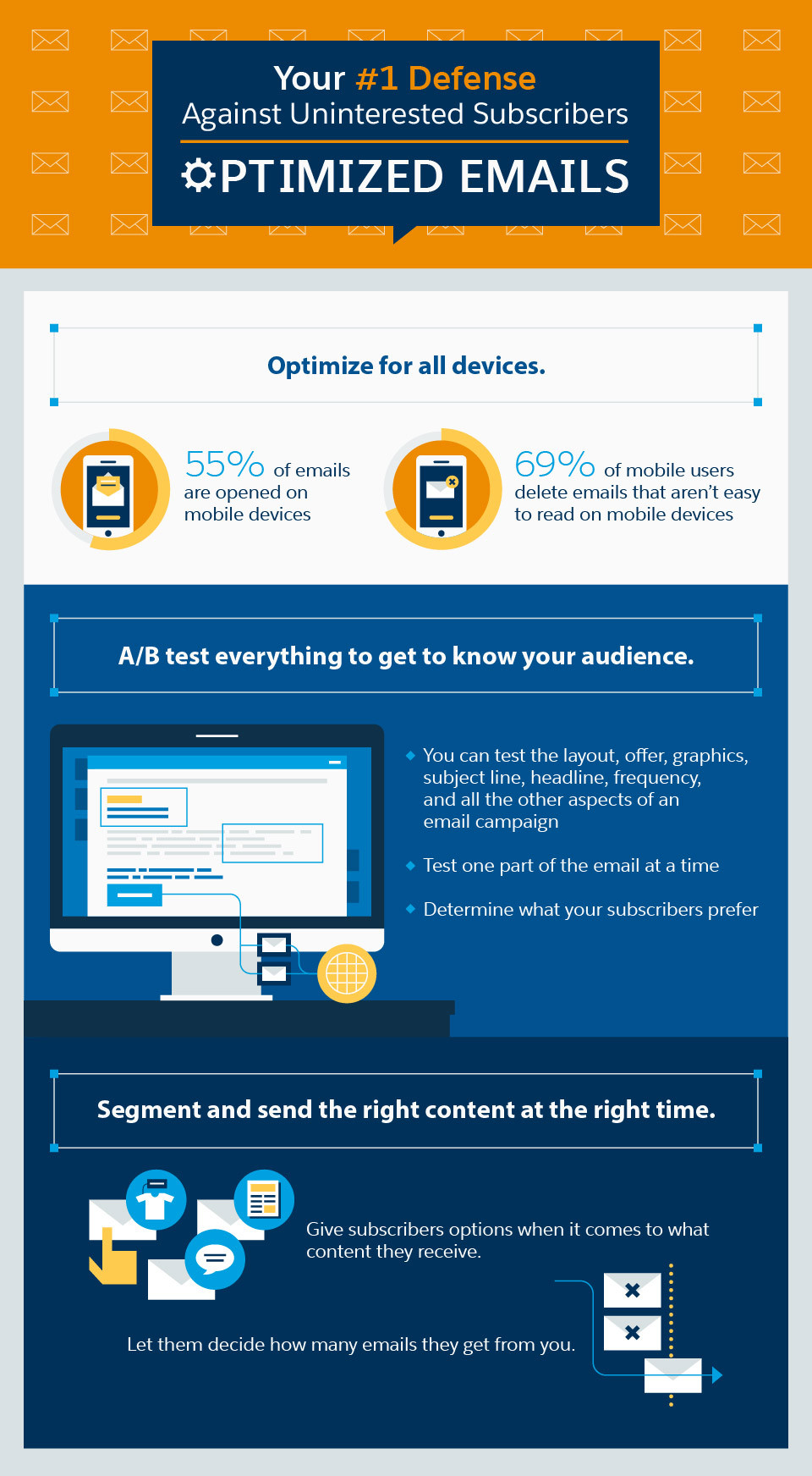
Decrease Unsubscribes through Optimised Content
Email Optimisation
Besides making sure your email messaging has a clear call to action and includes relevant content your subscribers are interested in, make sure your emails are optimised for mobile. Recent studies report that 55% of emails are opened on mobile devices, and 69% of mobile users delete emails that aren’t optimised to make it easy for them to read.
Many of the major email subscription providers are auto-optimising for multiple devices. Make sure you preview and test your emails to make sure your images and layouts are easy to read on mobile and tablet devices.
Test Multiple Variables
A great way to decrease unsubscribes is by testing everything to see what has the most impact. By using A/B testing on your emails — the layout, offer, graphics, subject line, headline, frequency, and all the other aspects of an email campaign — one at a time, you can determine what your subscribers want to see, which will help you decrease the number of email unsubscribes on your campaigns.
Don’t wait until your unsubscribe percentage is a cause for concern. Testing multiple variables is a continuous process, and your team should use A/B tests on a regular basis to determine what gets the most engagement.
Consider Segmentation Options
MarketingProfs suggests giving email subscribers options when it comes to what content and how many emails they receive from you. Subscribers are less likely to unsubscribe if they can choose to only receive one email per week (instead of five), or subscribe only to emails about specific products, services, or information they care about.
If you take these options into consideration, you can help make sure your unsubscribe averages as close to 0% as possible.
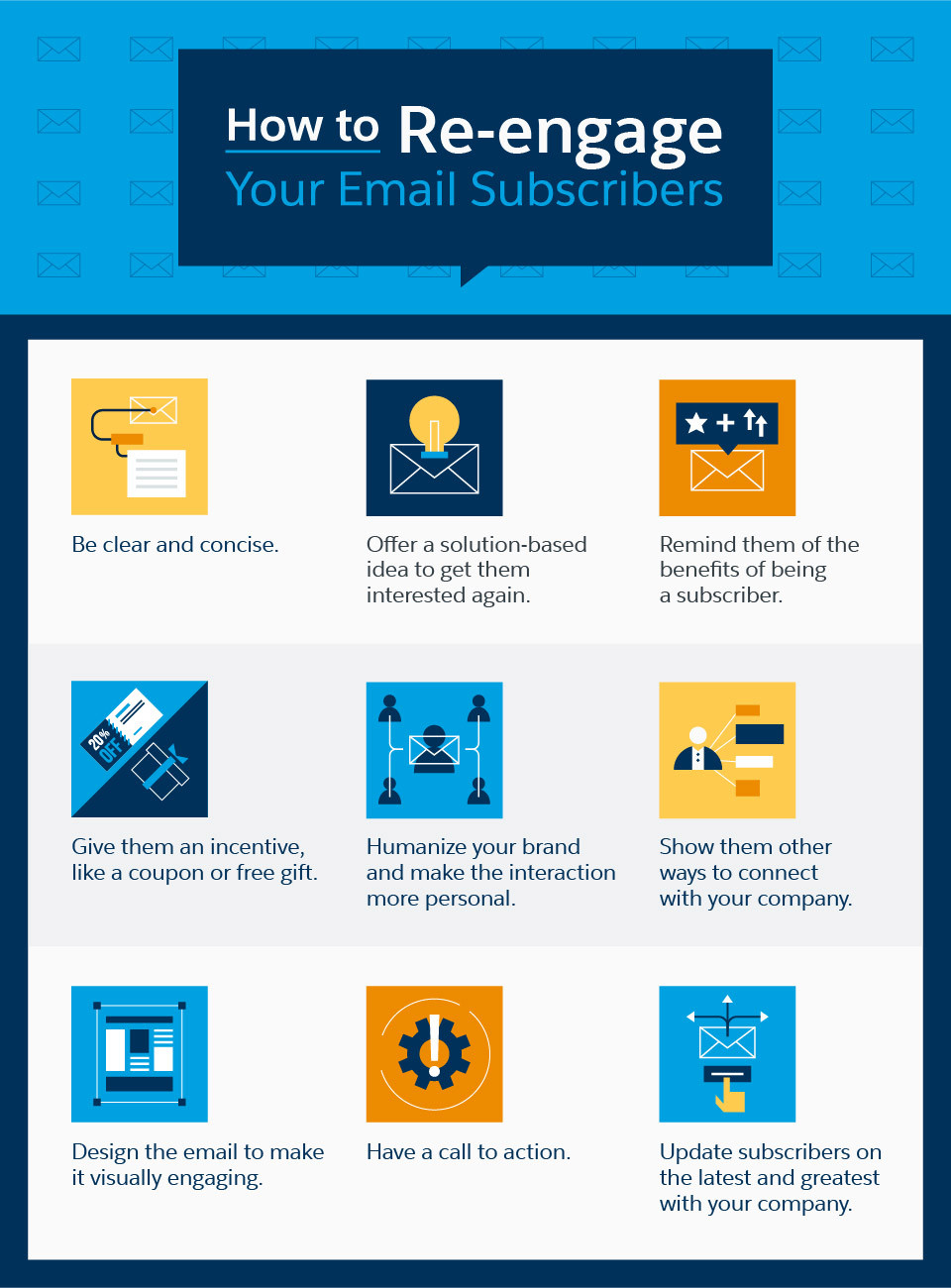
Re-engagement Best Practices
Whether you are attempting to decrease bounces, spam complaints, or unsubscribes, the best chance a company has at running optimised email campaigns is to make sure its subscribers are involved and interested in what it has to say. Reach out to users who regularly delete your emails without opening, reading, or converting by running a re-engagement campaign.
A re-engagement campaign is your opportunity to ask subscribers to opt-in again to your emails. Offering a special discount or valuable content can help this response, but the only way to make sure your audience is truly listening is to have them complete a call to action.
Target inactive subscribers. Consult your email campaign reports to find subscribers who fit into categories you most want to change: those who haven’t clicked on a call-to-action button after opening your email, or people who haven’t opened your emails in a specific time frame (for example, three to six months). Once you’ve looked through your reports, segment your audience appropriately and send targeted, personalised emails to each group. Ask them to subscribe again, or inquire as to what kind of content they’d like to receive. Your goal is to ensure those who are interested in your content will keep receiving it, and people who would rather not receive emails from you have that option.
This re-subscribe campaign can help your metrics and make sure your emails are going to the most targeted audiences. Impact, a branding and design firm, recommends making your re-engagement email an intimate call to action, such as “We Miss You!” This helps customers rekindle their sense of loyalty and may make it easier to re-engage. Trendline Interactive has a thorough presentation covering 45 examples of re-engagement emails on SlideShare that you can use for inspiration.
All email marketers know that optimising email marketing campaigns is an ongoing, exhaustive process. Follow concrete steps, such as those outlined above, to help you not only keep your negative metrics low, but also make sure your email subscriber base is healthy and excited to receive your content in their inboxes. By making the experience as beneficial as possible, you can ensure your customers are looking forward to your offers and information.
Share “How to Re-engage Your Email Subscribers” on your site:

Questions?
Our reps have answers.
Ask about Salesforce products, pricing, implementation, or anything else — our highly trained reps are standing by, ready to help.


